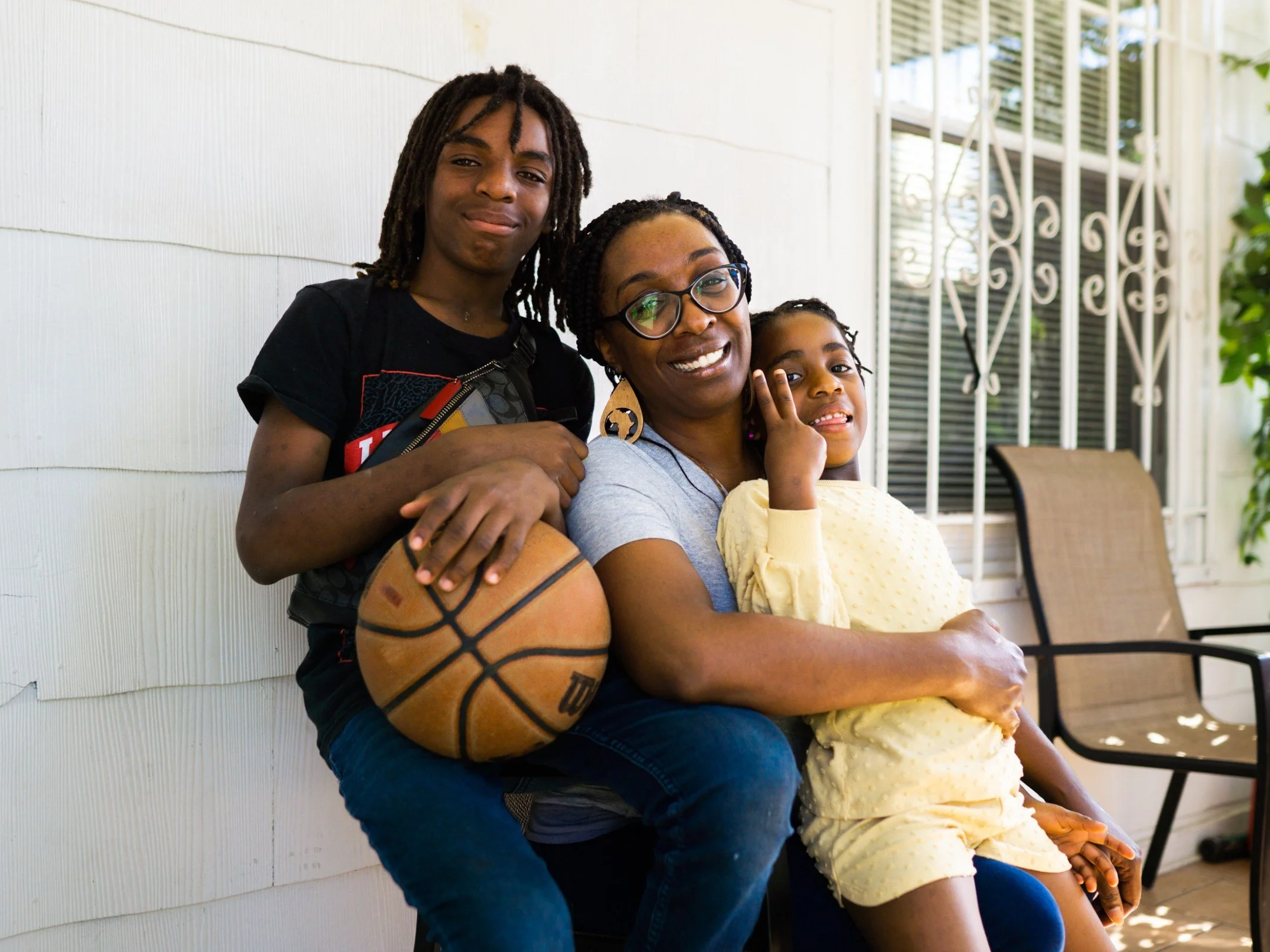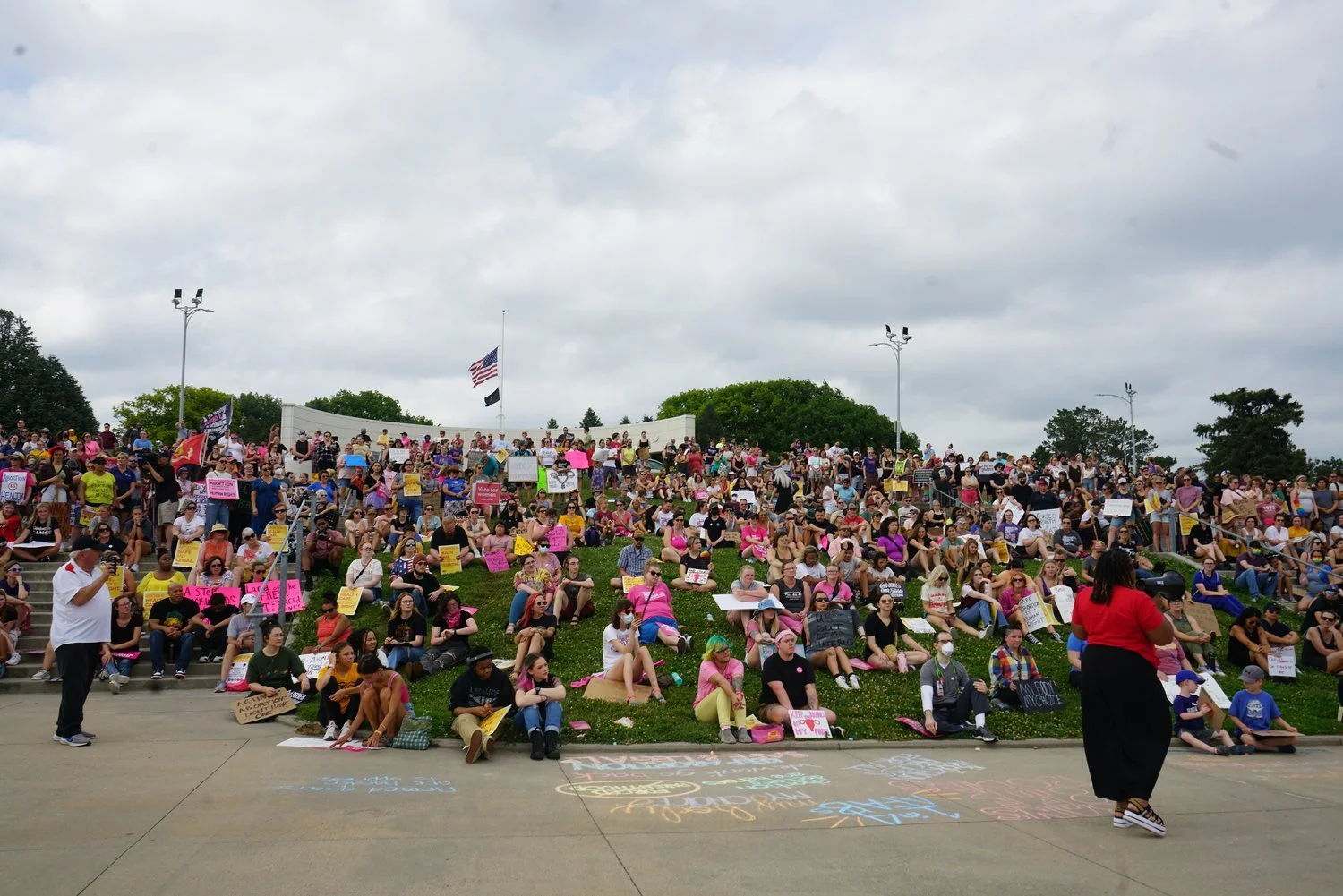COVID-19 Complicates Custody Battles in Family Court
By Anuska Dhar
November is family court awareness month. The designation began to raise awareness and spur change in the family court system and to honor the 758 children who have been murdered by separating or divorcing parents in the U.S. since 2008. And October is domestic violence awareness month. NOISE welcomes readers to share their stories with us.
During the height of the pandemic, an Omaha mother sharing custody with her ex-husband (a medical professional), called him out on social media after he took their kids on a trip to a crowded indoor entertainment and shopping vacation destination. After posting, she quickly received pushback from his lawyers, and he himself threatened to send the police to her house.
Shelly Smith (not her real name) is not the only mother navigating tricky custody waters during the pandemic. When NOISE spoke to her in the late spring of 2021, over the phone, she said she belonged to a Facebook group of women whose exes or partners were using COVID-19 as a way to control, scare, and even hurt the ex-spouse/co-parent. Smith said six lawyers she had spoken to affirmed the courts were not taking the virus into consideration when people were breaking their custody agreements. “Instead of paying attention to what’s safe for children, they’re more concerned with parental rights.”
While there are over 500 members in the private Facebook group, Smith was the only mother who was willing to comment publicly for a news article.
Co-parents can weaponize the virus in any number of ways, including capitalizing on and spreading misinformation, minimizing the disease’s seriousness, or even flat out pretending it is not real. According to a paper published by the Center for Global Development looking at the relationship between pandemics and violence against women and children, “Controlling behaviors and further acts of violence may also be coping mechanisms for perpetrators who feel a loss of control due to quarantine.”
According to the Center for Global Development,
“perpetrators may use misinformation or scare tactics to control or blame them (National Domestic Violence Hotline, 2020),” and even “withhold necessary safety items (e.g. hand sanitizers, soap, disinfectant, protective masks).”
Since the beginning of the COVID-19 pandemic in the U.S. in March 2020, Smith said she has had to fight for her children and herself every step of the way. The first battle was over taking the kids out of school. That dispute ended when schools quickly shut down on their own and provided alternative learning options. New co-parenting problems continued to crop up, putting Smith in tough positions, including a warning from her doctor that Smith is at high risk for COVID-19 complications because of a health condition.
Just recently before our interview with her in April, she said she had been asking her ex-husband to speak with her because she wanted to know whether he was following all CDC guidelines before sending her daughter over to him. When he refused to communicate, Smith was left with no choice but to send her daughter to her father’s house, despite potentially bringing her in harm’s way.
Legal professionals Malika Kaur and Kelly Behre noted in a report surveying 45 professionals who have witnessed mothers entrapped in custody litigation with exes during the pandemic, that this isn’t an uncommon situation when domestic abuse was a factor in a divorce. Some former spouses are “using the crisis to increase their manipulative tactics while some survivors are making exceptions as far as access to their children that they otherwise would not grant.” Further, according to the Center for Global Development, “perpetrators may use misinformation or scare tactics to control or blame them (National Domestic Violence Hotline, 2020),” and even “withhold necessary safety items (e.g. hand sanitizers, soap, disinfectant, protective masks).” And all of this combined creates perhaps the abuser’s most dangerous tactic of all: using one’s child as a potential source of infection against their ex-spouse, while endangering the child as well.
Back in October of last year, according to Smith, her ex-husband had been spending many weekends with extended family visiting with as many as 20 - 40 people at a time. One night, after he sent their daughter back home to her mother, Smith cuddled with her for three hours before he let her know that their daughter had been exposed to a positive COVID-19 case via family that had been over.
Smith got her daughter tested and she came back negative. A week and a half later however, after more family visited her ex-husband’s home, their daughter caught the virus. Smith strictly followed all CDC guidelines about quarantining and masking, and luckily no one else caught the virus in her home. After the quarantine period ended, when it came time for Smith’s daughter to visit her father, he claimed that she was not legally allowed to visit because she was recovering from COVID-19 symptoms. After he agreed to have their daughter over, he moved his entire family out for the weekend and quarantined her in a room by herself with a mask on. When the risk of infection was flipped onto him, suddenly it seemed Smith’s ex-husband understood how dangerous the disease was.
And over the course of the past year during the pandemic, Smith said her ex-husband has consistently exposed their daughter -- who is now a COVID-19 long-hauler -- on numerous occasions. What may at first glance appear to be caring gestures by a father -- taking their daughter out on shopping sprees, public pool days, trips to hotels with other families -- turn negligent under the lens of a pandemic. According to Smith, he ignored mask mandates and, although a medical professional, misquoted CDC guidelines to her in private messages.
Smith said,
“He’s taking her to the Children’s Museum, having sleepovers and playdates with family and bringing people in from [out of state]...where they’re having an outbreak, and not telling me. So it’s just been…like, fearing for our lives for a year, essentially.” Now, their daughter continues to experience symptoms long after the virus has left her body.
This weaponization of COVID-19 by abusers is only exacerbating a court system that Smith says is already riddled with sexism, beginning with the differing expectations of mothers versus fathers in the courtroom. According to a segment from NPR on working mothers, due to a cultural bias based on outdated gender roles, mothers are often seen as the more nurturing caregiver and thus the preferred parent in court, yet when they start working long hours, they are more scrutinized for it. Smith said this alleged cultural bias towards mothers falls apart when there are other factors at play that elevate the father’s status as a parent, such as higher income. A higher income can also afford one better legal representation. Further, in Smith’s experience, domestic violence was not believed by the courts, even when proof was given.
Smith thinks fathers are given much more slack in the role of caregiver. Smith recalled a phase where her ex-husband wasn’t feeding the kids consistently and she complained to her own lawyers. “I would say, like he is not doing these basic things to care for my kids. And this is even before COVID, and they [Smith’s lawyers] would go, ‘Yeah, but dads…’”
After calling Child Protective Services, Smith said they told her there was nothing they could do for her if the kids weren’t physically malnourished, even if it was a case of not having access to food or not knowing how to prepare it during their visits with him. She pointed out that the reason they weren’t malnourished was because they also spent time with her. “It’s just this very, very broken system that allows fathers [leeway] under their “man-ness” and their inability to be grown-ups, I guess, that we think of dads. This ridiculous leeway to the point of abuse and not being safe.” Over the past six years, Smith said she has been fighting custody battles one after another, as her children started refusing to see their father. According to Tina Swithin, author of the series, “Divorcing a Narcissist,” there is a concept called “post-separation abuse,” where manipulation moves from the home to the family court system, which becomes the abusers' new platform for control.
The advocacy groups One Mom's Battle and Custody Peace submitted the Complaint with the support of more than 100 mothers. Source: PRNewswire
“Post-separation abuse continues to escalate and often, far surpasses the DV [domestic violence] that victims are subjected to while under the same roof as their abuser. After the relationship ends, the perpetrator sets their sights on the child(ren) to exert control and to terrorize the healthy parent. Every high-conflict custody battle has three basic narratives: the abuser’s need for control, the abuser’s need to “win” and, the abuser’s desire to hurt or punish the healthy parent.”
As legal professionals Kaur and Behre found in their survey, there has been an “amplification of the usual blindness shown by the family courts toward abusive dynamics” during this pandemic. And that’s the crux of this issue, when you combine the sexism occuring in courtrooms with a warring spouse weaponizing COVID-19, it creates dire circumstances for mothers and their children.
Ultimately, Smith said she hopes sharing her story will take the conversation about co-parenting during COVID-19 off of social media platforms and bring light to these issues so that courts are pressured to take a look at literal life or death situations beyond the custody order, which aren’t taken into account. And on a more personal level, she says she wants “other women to know that number one, they are not alone. And that their children are not alone. We’re all fighting this.”















